The Scout, a rugged utility vehicle first introduced by International Harvester in 1960, was more than just a mode of transportationt. It was a symbol of American ingenuity and working-class grit. Built by laborers for laborers, the Scout quickly carved out a niche in the automotive landscape, standing toe-to-toe with competitors like the Jeep CJ and Ford Bronco.
International Harvester, founded in 1902, had long been a cornerstone of American manufacturing, known for its agricultural equipment and trucks. The Scout was their foray into the burgeoning utility vehicle market, designed as a versatile option for farmers, construction workers, and outdoor enthusiasts alike. What made the Scout special was its adaptability: equally at home hauling tools to a job site or navigating rocky trails on a weekend adventure.
The Scout's appeal wasn't just mechanical, it was cultural. It represented hard work, resilience, and American craftsmanship. Owners of classic Scouts often speak about their vehicles with pride and nostalgia. These weren't just machines; they were family heirlooms, built to last and lovingly restored by enthusiasts who appreciated their no-nonsense functionality and rugged charm.
For two decades, the Scout was a staple of American roads and off-road trails. Its popularity seemed unshakeable, with a loyal following that appreciated its durability and versatility. However, despite this success, the Scout's production came to an abrupt halt in 1980. The real story behind its demise lies in the mismanagement and greed at International Harvester's highest levels, specifically under the leadership of CEO Archie McCardell.
In 1977, Archie McCardell took over as CEO of International Harvester, lured by an exorbitant compensation package that, in today's terms, would be worth approximately $19.6 million. This included a salary equivalent to about $2.4 million, a signing bonus of around $7.8 million, and a low-interest loan worth about $9.4 million in 2025 dollars. This astronomical sum highlighted the stark contrast between executive compensation and worker wages, foreshadowing the conflicts to come.
McCardell immediately implemented aggressive cost-cutting measures, slashing around $640 million. While his actions initially boosted profits, they came at a severe cost to the workforce who had been the backbone of building the brand and the company's long-term stability.
The breaking point came in 1979 when McCardell, demonstrating a profound lack of understanding of labor relations, provoked a showdown with the United Auto Workers union. His attempt to roll back hard-won worker rights, particularly regarding overtime rules, led to a devastating 172-day strike. This strike - the longest in UAW history at the time - cost International Harvester $479.4 million in lost profits and pushed the company's short-term debt from $442 million to a staggering $1 billion.
McCardell's actions were not about revitalizing the company but about maximizing short-term profits at the expense of workers and the company's future. His greed and mismanagement set International Harvester on a path to financial ruin, ultimately leading to the company's breakup and the end of the legendary Scout brand.
By 1981, International Harvester's debt had ballooned to $4.5 billion. The financial strain forced the company to sell off assets and scale back operations drastically. In May 1982, McCardell resigned under pressure from the board of directors, but by then it was too late to save International Harvester's light truck division, and with it, the beloved Scout.
On October 21, 1980, the last International Harvester Scout, a Tahitian Red diesel-powered Traveltop, rolled off the assembly line in Fort Wayne, Indiana. The Scout, a product built by laborers for laborers, had fallen victim to corporate greed at the expense of those very workers who had made it successful.

What makes this story so tragic is that it didn't have to end this way. McCardell's short-sighted focus on profits over people not only alienated his workforce but also undermined the very foundation of International Harvester's success. The demise of the Scout serves as a stark reminder of the consequences when companies prioritize excessive profits over the well-being of their workers.
However, the Scout story doesn't end there. Decades later, Scout Motors is being reborn under Volkswagen Group's stewardship. Recognizing the enduring appeal of the Scout brand, Volkswagen acquired it through its truck division Traton's purchase of Navistar (the successor to International Harvester) in 2020. Now positioned as an independent subsidiary within Volkswagen Group, Scout Motors is preparing to launch its first new models since 1980: an all-electric SUV (the Traveler) and pickup truck (the Terra), both slated for release in 2026.
This revival isn't just about nostalgia, it's about reimagining what made the Scout legendary for a new generation of drivers. Designed, engineered, and built in America, including at a new factory planned for Blythewood, South Carolina, the new Scout vehicles aim to combine cutting-edge electric technology with the rugged capability that made the original so beloved.
For Volkswagen Group, this is more than just another EV launch; it's an opportunity to honor an American legacy while embracing modern innovation. For fans of classic Scouts - and newcomers alike - it’s a chance to see this legendary nameplate return to its rightful place on roads (and trails) across America.
The rebirth of Scout Motors represents more than just the return of a beloved vehicle; it's a chance to right past wrongs and create a new legacy built on respect for workers and sustainable business practices. As Scout Motors embarks on this new chapter, it faces the challenge of honoring its working-class roots while adapting to the future of automotive technology.
The story of Scout's rise, fall, and potential rebirth carries an important lesson: greed is no foundation for success. When companies prioritize short-term profits over long-term stability - and when they fail to value their workers - they risk losing everything that made them great in the first place.
As we look ahead to this exciting new chapter for Scout Motors, let's hope it's one that learns from the past, valuing contributions from every worker while proving that doing right by people isn’t just ethical, it’s good business too.
The story of the Scout is one of resilience, innovation, and hard lessons in corporate mismanagement. As Scout Motors prepares to bring this legendary nameplate back to life with a modern electric twist, the big question remains: will it capture the same spirit that made the original so beloved? And do you think Volkswagen’s revival of Scout can truly honor its working-class roots while embracing the future of EVs? Share your thoughts in the comments below!
Image source: Scout Motors Media.
Mikey Garcia has been passionate about cars and alternative fuels long before they were mainstream, from closely following the GM EV1 to running biodiesel in his Volkswagen Beetle TDI and Mercedes 300SD. As an early EV adopter, he drove a 2015 Fiat 500e and now owns a 2017 Chevy Bolt, showcasing his commitment to accessible electric mobility. With nearly a decade of tech experience at Apple, Mikey brings a unique perspective to the intersection of automotive innovation, sustainability, and technology. You can reach him on X and LinkedIn to follow him, or to send him news tips.


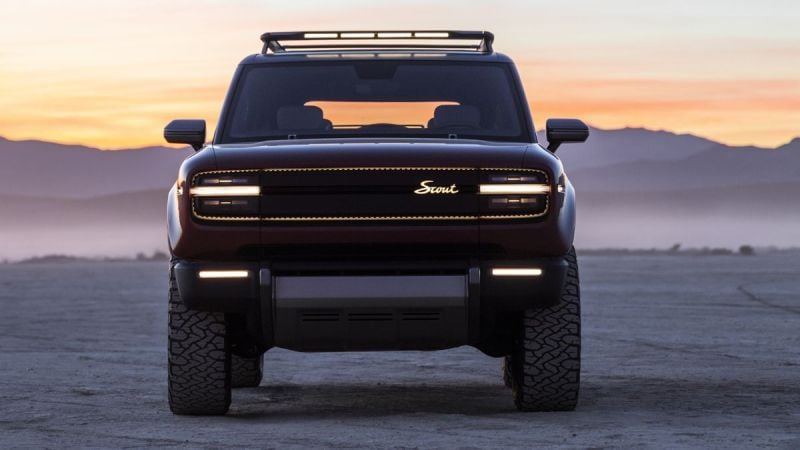




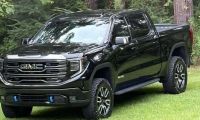
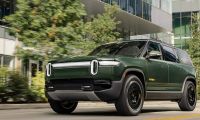
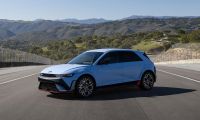
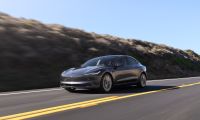
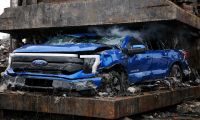
Comments
Bring it on, ASAP.
Permalink
Bring it on, ASAP.
The 1964 scout was a dream…
Permalink
In reply to Bring it on, ASAP. by Crum Researc (not verified)
The 1964 scout was a dream vehicle for me but I didn't have the money then. I watch out for a restored one and their prices stop me, again.
Now, this EV may be the answer. I'm looking forward to test driving it.
Who will service the vehicle…
Permalink
Who will service the vehicle? VW dealerships?
That's a great question! I…
Permalink
In reply to Who will service the vehicle… by Woodoo Lee (not verified)
That's a great question! I think they want to operate separately from VW. From my research it looks like Scout is building its own dedicated service network which will handle repairs and maintenance. The company plans to have 57 retail and service sites by its second year of operation, eventually expanding to 100 locations by 2032, covering 85% of Scout owners within 200 miles. Additionally, Scout plans on having mobile service units, capable of addressing up to 80% of repair needs, and may certify third-party service partners for more remote customers
I am ready for this vehicle.
Permalink
I am ready for this vehicle.
I owned a Scout in the mid…
Permalink
In reply to I am ready for this vehicle. by Kristine Luf (not verified)
I owned a Scout in the mid-70’s, was an excellent vehicle!!! They will go broke producing electric Scouts, they’d have to pay me to own one, when the batteries need to be replaced it will cost 50k or more. Whoever buys one is an idiot!!!!
It's awesome you had a Scout…
Permalink
In reply to I owned a Scout in the mid… by R Smith (not verified)
It's awesome you had a Scout back in the day! They were truly something special. I'm just curious, though, where did you hear about EV battery replacements costing $50k? That doesn't seem to line up with current pricing, which is typically in the $5k-$20k range and falling. If you have any receipts or sources, I'd be really interested to see them!
Also, calling EV buyers "idiots" seems a bit strong. Automakers need to offer EVs to stay competitive in a global market that's rapidly shifting. It's about supporting American innovation, right? Plus, EV batteries often outlast gas engines these days! Have you had a chance to drive an EV? So much of the negative information seems to come from biased sources, not actual experience. Maybe we can chat more about this, I'd love to learn more about where the passion on this subject stems from.
I would like to know how you…
Permalink
In reply to It's awesome you had a Scout… by Mikey Garcia
I would like to know how you are going to charge it out in the middle of nowhere mountains, desert etc. Back in the day most people who owned one used them in remote places camping, hunting etc, how does it hold charge in cold climate? No thanks to the electric pavement princesses I've owned 3 through the years no way would I ever buy an electric save that for the tree hugging greenie yuppies
I would like to know how you…
Permalink
In reply to It's awesome you had a Scout… by Mikey Garcia
I would like to know how you are going to charge it out in the middle of nowhere mountains, desert etc. Back in the day most people who owned one used them in remote places camping, hunting etc, how does it hold charge in cold climate? No thanks to the electric pavement princesses I've owned 3 through the years no way would I ever buy an electric save that for the tree hugging greenie yuppies
Well, to be honest, no gas…
Permalink
In reply to I would like to know how you… by John (not verified)
Well, to be honest, no gas stations in the middle of nowhere either. If you had a farm in the middle of nowhere, you could buy enough solar panels to keep you running :-)
Nope, you're wrong, this is…
Permalink
In reply to I owned a Scout in the mid… by R Smith (not verified)
Nope, you're wrong, this is the future. 150 miles on plug in alone, and I wouldn't have to buy gas but once or twice a YEAR. The battery, just like the rest of the vehicle, has a WARRANTY. Just because musk can't do battery swaps, doesn't mean Scout won't be able to. Proper planning, and engineering, are needed, NOT GREED.
The story is great and would…
Permalink
The story is great and would love to purchase a new scout. My family drove one when I was a child, as did my wife's (who's father was one of those affected IH workers). But there needs to be an internal combustion and/or hybrid option. We're still over our skis in America with regard to EV infrastructure and I can't justify at this point an EV purchase for everyday use.
Scout Motors is tackling…
Permalink
In reply to The story is great and would… by Thomas (not verified)
Scout Motors is tackling some of the common EV concerns people have mentioned in the comments head-on by offering both fully electric and hybrid options for their upcoming SUVs and pickups. The hybrids combine a battery with a gas generator, giving over 500 miles of range—perfect for long trips or areas with limited charging.
EVs are fuel agnostic, meaning you can charge them from an outlet, solar, wind, or even a generator—far more options than a gas car. On farms, where electricity is often easier to access than fuel, this flexibility is a game-changer. And if you go with Scout’s hybrid, you can still fill up with gas when needed.
As much as I love the idea…
Permalink
In reply to Scout Motors is tackling… by Mikey G. (not verified)
As much as I love the idea of a new Scout, Regretfully I think VW is missing the past of the Scout. We who have owned a Scout love the idea of being able to take it out to the woods or mudpit and just have fun with it.
The research department needs to go to an IH Scout event and talk to the people who own them. The idea of taking a $75K vehicle and thrashing through the woods and getting it all scratched up isn't a thing we want. We want a vehicle under $30k that we can take offroading.
Sadly a lesson in greed all…
Permalink
Sadly a lesson in greed all vehicle greats could learn from right now.